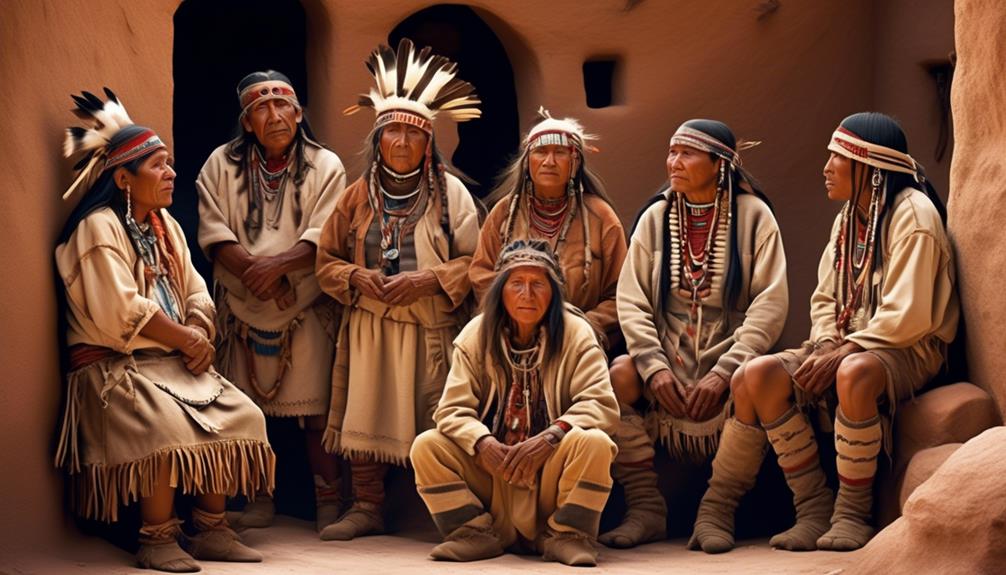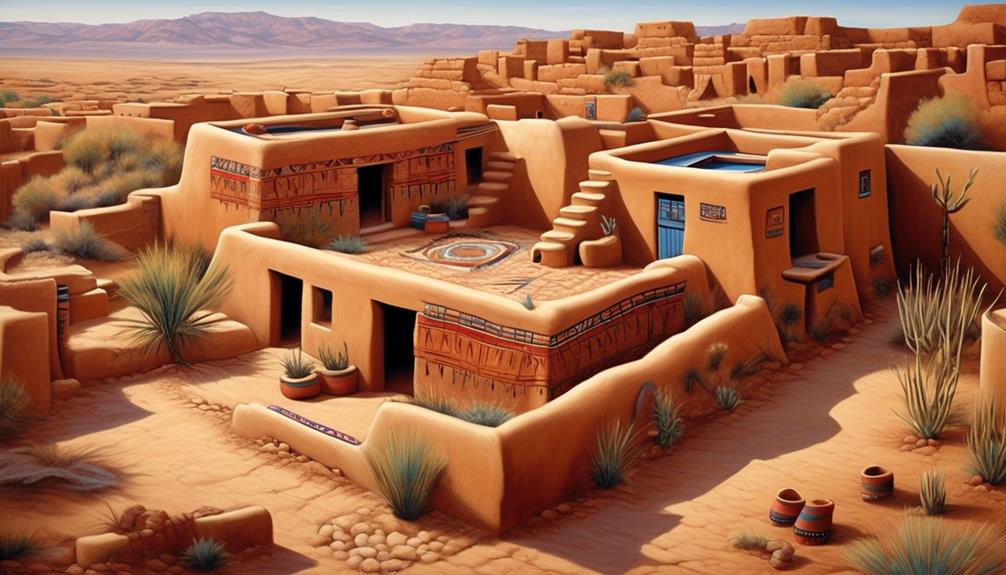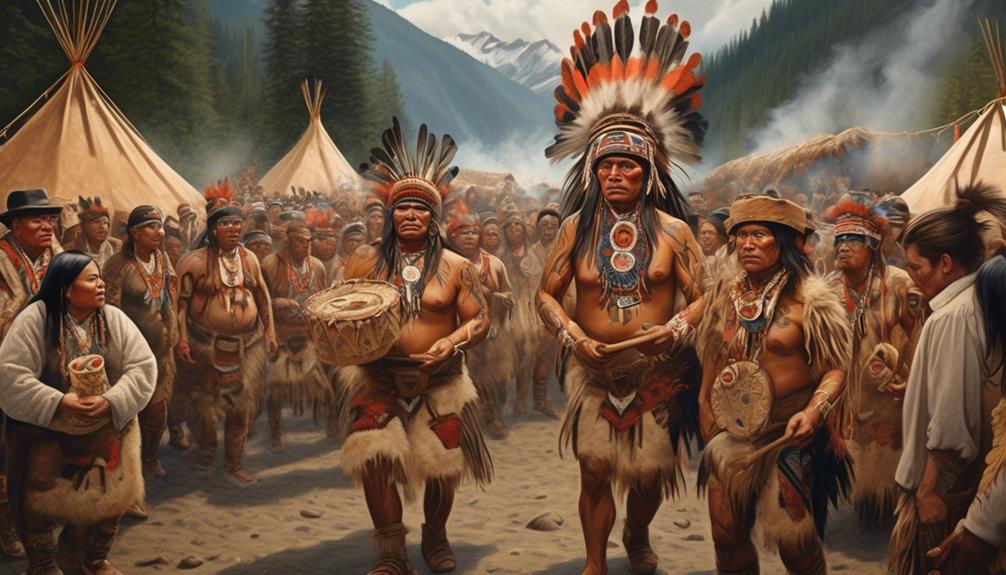The Hopi Tribe is recognized as one of the oldest Native American groups in North America, with a cultural history that spans over a millennium. Situated in the dry lands of the Southwestern United States, their community has intrigued numerous historians and anthropologists.
But when exactly were the Hopi Tribe made? The answer to this question lies in a complex web of legends, archaeological evidence, and historical accounts, offering a fascinating journey through time and culture.
Key Takeaways
- The Hopi tribe was made in ancient times and has lived in their villages in present-day Arizona for over a millennium.
- The establishment of the Hopi Reservation by the U.S. government in 1882 marked a shift in government relations with the Hopi tribe and granted them a distinct territory to maintain their cultural practices.
- Hopi legends and oral traditions play a crucial role in preserving the Hopi way of life and ensuring the transmission of cultural practices, rituals, and beliefs.
- The Hopi tribe had contact with European settlers, which brought changes in their spiritual and cultural beliefs, shaped the economic landscape through trade relations, and also resulted in challenges and conflicts over land and resources.
Hopi Tribe Origins and Early History
The Hopi tribe, believed to have originated in the southwestern United States, has a rich and complex history that dates back centuries. Their origins can be traced to the people of the ancient Puebloan culture who lived in the Four Corners region around 500 BCE.
The Hopi have a unique migration pattern, as they settled in the area of present-day Arizona and have lived continuously in their villages for over a millennium. Their cultural practices are deeply rooted in agriculture, with a focus on cultivating maize, beans, and squash.
The societal structure of the Hopi tribe is organized around matrilineal clans, with a strong emphasis on spirituality and maintaining a harmonious relationship with the natural world. Evidence suggests that the Hopi have maintained their cultural identity through a combination of adaptation and resistance to outside influences, which has allowed them to preserve their traditions and way of life.
Understanding the origins, migration patterns, cultural practices, and societal structure of the Hopi tribe is crucial to comprehending their enduring legacy in the southwestern United States.
Legends and Oral Traditions

Rooted in the collective memory of the Hopi people, legends and oral traditions serve as vital repositories of ancestral wisdom and cultural continuity. These narratives, passed down through generations, offer profound insights into the Hopi cultural beliefs and historical events.
- Ancient Origins: Hopi legends often recount the tribe's migration and settlement in the Southwest, shedding light on their ancient origins and the formation of their unique cultural identity.
- Spiritual Teachings: Many oral traditions convey spiritual teachings and moral lessons that have guided the Hopi people for centuries, offering a window into their ethical framework and value system.
- Historical Accuracy: While Hopi legends may not always align with Western historical frameworks, they provide valuable perspectives on significant events and offer alternative interpretations of the tribe's history.
- Cultural Continuity: These oral traditions play a crucial role in preserving the Hopi way of life, ensuring that cultural practices, rituals, and beliefs are transmitted faithfully to future generations, thus maintaining the continuity of the Hopi culture.
Archaeological Evidence and Findings
Exploring the archaeological evidence and findings provides valuable insights into the material culture and historical trajectory of the Hopi tribe, shedding light on their ancient practices and interactions with neighboring societies.
Archaeological discoveries within the Hopi tribal lands have unearthed a wealth of ancient artifacts, including pottery, tools, and architectural remains. These findings have been crucial in understanding the Hopi people's way of life, social organization, and economic activities throughout different periods of their history.
Through the analysis of these artifacts, researchers have been able to trace the development of agricultural techniques, trade networks, and religious practices within the Hopi society. Furthermore, the examination of ancient dwellings and ceremonial structures has offered significant clues about the architectural styles and community dynamics of the Hopi people.
Contact With European Settlers

Uncovering early encounters between the Hopi tribe and European settlers reveals significant shifts in their social and economic dynamics. These interactions, starting in the 16th century, had a profound impact on the Hopi people, influencing their cultural exchange and trade relations.
- Introduction of New Goods: European settlers introduced the Hopi to new goods such as metal tools, livestock, and textiles, which significantly altered their way of life and material culture.
- Religious and Cultural Impact: The arrival of European settlers also brought about significant changes in the spiritual and cultural beliefs of the Hopi tribe. This led to a complex intertwining of traditional Hopi practices and newly introduced religious elements.
- Shift in Trade Relations: The trade relations between the Hopi and European settlers led to the exchange of various goods, including agricultural produce and crafts, shaping the economic landscape of the region.
- Challenges and Resistance: The influx of European settlers also brought challenges to the Hopi tribe, including conflicts over land and resources, leading to periods of resistance and adaptation.
The early contact with European settlers significantly transformed the Hopi tribe's way of life, leading to a complex interplay of cultural exchange and trade relations that continue to influence the tribe's dynamics to this day.
Establishment of Hopi Reservation
Having encountered significant shifts in their social and economic dynamics due to early interactions with European settlers, the Hopi tribe later saw the establishment of their own reservation, marking a pivotal moment in their history.
The establishment of the Hopi Reservation in 1882 was a result of the U.S. government's efforts to consolidate various Native American tribes into designated lands. This marked a significant shift in the government relations with the Hopi tribe, as it granted them a distinct territory where they could maintain their cultural practices and traditional way of life.
The establishment of the reservation wasn't without challenges, as the U.S. government aimed to exert control over the indigenous populations and their lands. This led to complex negotiations and agreements between the Hopi tribe and the federal government, shaping their future interactions and legal standing within the United States.
The reservation provided the Hopi tribe with a sense of autonomy and security, allowing them to preserve their language, ceremonies, and agricultural traditions. However, it also brought about new challenges as the tribe navigated the complexities of living within a confined territory under the jurisdiction of the U.S. government.
This period marked a crucial juncture in the Hopi tribe's history, shaping their ongoing relationship with the federal government and their efforts to preserve their cultural heritage.
Frequently Asked Questions
What Are the Traditional Hopi Ceremonies and How Are They Performed?
Traditional Hopi ceremonies include ritual dances and religious practices that honor their ancestors and the spirits. These ceremonies are performed throughout the year and are integral to the Hopi way of life.
The Hopi use kachina dolls in their ceremonies, representing spiritual beings. Each ceremony has specific rituals and dances that are passed down through generations, reinforcing the tribe's cultural and spiritual identity.
How Has Modern Society Impacted the Hopi Tribe's Way of Life and Traditions?
Modern society has significantly impacted the Hopi tribe's way of life and traditions. Language preservation has been challenged due to the influence of English and the education system. Traditional knowledge transmission has been disrupted, affecting the continuity of cultural practices.
With technological advancements, the younger generation is increasingly drawn to mainstream culture, potentially diluting their connection to ancestral traditions. These changes require careful navigation to ensure the preservation of the Hopi way of life.
What Role Do Women Play in Hopi Society and Ceremonies?
In Hopi society, women play crucial roles in ceremonies, often leading and overseeing important rituals. Their responsibilities include preparing and maintaining sacred items, such as prayer feathers and ceremonial attire.
Women also pass down traditional knowledge and teachings to younger generations, ensuring the continuity of cultural practices.
Their contributions are integral to the preservation and vitality of Hopi ceremonies, reflecting the significance of women within the tribe's spiritual and cultural fabric.
What Are the Most Important Hopi Cultural Symbols and Their Meanings?
Hopi symbols are central to their cultural identity. They hold deep meanings and are integral to ceremonial practices. These symbols have modern impact, preserving traditions and fostering community cohesion.
Women play a significant role in upholding and transmitting these symbols. Additionally, Hopi cultural symbols reflect their environmental interaction, emphasizing harmony with nature.
Understanding the significance of these symbols provides insights into the rich cultural heritage of the Hopi tribe.
How Do the Hopi Tribe View and Interact With the Natural Environment?
Interacting with the natural environment, the Hopi Tribe embodies a deep reverence for the land. Their sustainable living practices are rooted in a profound understanding of interconnectedness with nature.
By harmonizing with the earth, they cultivate a balanced ecosystem, reflecting their belief in responsible stewardship. The tribe's ceremonial dances, agricultural rituals, and traditional crafts all symbolize their intimate relationship with the natural world.
This holistic perspective shapes their daily interactions and fosters a sustainable way of life.
Conclusion
In conclusion, the Hopi tribe has stood as a sturdy oak tree, rooted in their ancient traditions and resilient in the face of change.
Their history, like the branches of the tree, stretches back through time, telling tales of survival, adaptation, and resilience.
As we look back on their journey, we see how the Hopi people have weathered the storms of history, standing tall and proud, like the ancient oak, their roots deep and unyielding.
Mary is a passionate writer who brings creativity and a fresh perspective to our team. Her words have the power to captivate and inspire, making her an essential contributor to our content. Mary’s commitment to storytelling and dedication to promoting Indigenous culture ensures that her work touches the hearts of our readers. We’re fortunate to have her as part of our team.










